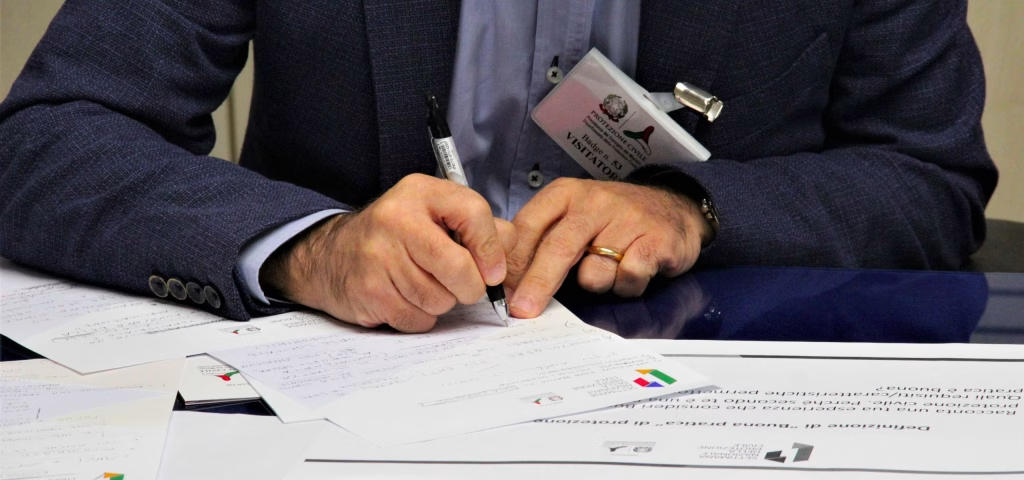The first call of the Italian Civil Protection Best Practices Observatory, dedicated to the National Early Warning System for hydrogeological and hydraulic risks, is open until April 30, 2025. The goal is to collect and enhance effective experiences already applied in the field to strengthen risk prevention and management, fostering the idea of a Civil Protection “system” that involves everyone
Hydro-geological risk management in Italy relies on a complex system of warning, prevention, and response, refined over time through field experience. Coordination between institutions, local authorities, and communities is essential to effectively reduce risk and build greater resilience to extreme events. The value of these experiences lies not only in their local application but also in their potential to be shared and transformed into reference tools for the entire National Civil Protection Service. This is precisely the foundation of the Italian Civil Protection Best Practices Observatory.
The Civil Protection Best Practices Observatory: an overview
Established by the Directive of the Minister for Civil Protection and Maritime Policies on December 7, 2023, the Civil Protection Best Practices Observatory was created to collect, systematize, and monitor successful experiences within the National Service. As outlined in the Civil Protection Code, the Observatory serves as a tool for the continuous enhancement and self-improvement of the system, promoting the sharing of practices that have proven effective in the field.
Marina Morando, Program Director at CIMA Research Foundation, who contributed to the Observatory’s development, emphasizes: “The creation of the Observatory is a crucial step in valuing the experiences gained in the field and fostering a prevention culture based on concrete evidence. This achievement is the result of years of research, dialogue, and collaboration between the Civil Protection Department, competence centers such as CIMA Research Foundation, local authorities, and territorial entities. Building a participatory and shared tool was essential to ensure that best practices are truly useful and applicable on a national scale.”
The call for best practices: focus on the Italian Early Warning System
With the Observatory now operational, a dedicated platform has been launched to collect best practices, accessible until April 30, 2025. To participate, applicants must register and fill out a digital form available on the platform. A user manual is provided to guide users through the process.
Il tema scelto per questa prima raccolta è il Sistema di allertamento nazionale per il rischio idrogeologico e idraulico, istituito con la direttiva del 27 febbraio 2004 e che ha compiuto vent’anni nel 2024. Questo sistema è cruciale per prevedere e gestire eventi come alluvioni e frane, fenomeni purtroppo frequenti nel nostro Paese.
To be recognized as a best practice, an experience must have been implemented by at least one entity within the National Service and successfully applied or tested in exercise contexts. Otherwise, it cannot be accepted into the platform.
The collected best practices may pertain to at least one of the following intervention areas, which undoubtedly encompass many of the actions you successfully carry out daily:
- Adaptation of procedures for public and private entities within the Early Warning System to ensure the continuity of services for citizens;
- Communication, information, and awareness-raising activities on warnings (color codes, bulletins, self-protection measures);
- Communication and information activities for citizens during an ongoing event;
- Linking early warning to early action, addressing challenges in implementing operational phases and developing organizational solutions for alert management based on local response capacity;
- Actions to enhance the effectiveness of Functional Centers, including training, monitoring and nowcasting, and experience-sharing initiatives;
- Organization of on-the-ground monitoring and response teams;
- Certification methodologies for processes and operational procedures related to the Early Warning System, as adopted by Regions and Functional Centers;
- Methodologies for evaluating the effectiveness of warnings;
- Optimization of coordination between Functional Centers, regional operations centers, and local operations centers.
An invitation to active participation
Collecting and sharing best practices not only strengthens the civil protection system but also promotes a culture of prevention and resilience within local communities.
“The involvement of institutions and organizations in civil protection contributes to a shared knowledge base. Only through collaboration and continuous exchange can we effectively tackle the challenges posed by natural risks,” concludes Marina Morando.
In an era where extreme climate events are becoming increasingly frequent, the Civil Protection Best Practices Observatory is a valuable resource for building safer and more resilient communities. The active participation of all stakeholders is essential to ensuring a future where prevention and preparedness are at the heart of our civil protection strategies.

